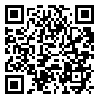BibTeX | RIS | EndNote | Medlars | ProCite | Reference Manager | RefWorks
Send citation to:
URL: http://jdm.tums.ac.ir/article-1-247-en.html
Background and Aim: With the introduction of different bondable restorative materials in dentistry, various methods have been suggested to enhance the polymerization and shear bond strength of these materials. The aim of this study was to determine the effects of different methods of enamel conditioning on bond strength of orthodontic brackets and on the bracket/ adhesive failure mode.
Materials and Methods: In this experimental in vitro study, brackets were bonded to thirty-six bovine incisor teeth with different protocols according to the manufacturer's instructions as follows: Group 1: conventional multistep adhesive (n=12) Group 2: self-etching primer system (n=12) Group 3: acid+self-etching primer system (n=12). Specimens were loaded in a universal testing machine (Instron, Canton and Mass) and the mode of failure was recorded. Data were analyzed by ANOVA and Kruskall-Wallis tests with p<0.05 as the limit of significance.
Results: The mean shear bond strength was 11.7 ± 4.2, 10.5 ± 4.4, and 10.9 ± 4.8 MPa for group 1, 2, and 3 respectively. There was no significant difference in bond strength among the three groups (P=0.800). No significant difference was observed among the three groups with respect to residual adhesive on the enamel surfaces (P=0.554).
Conclusion: Based on the results of the present study, the use of self-etching primers may be an alternative to conventional phosphoric acid pre-treatment in orthodontic bonding.
Received: 2005/07/5 | Accepted: 2006/12/16 | Published: 2013/08/18
| Rights and Permissions | |
 |
This work is licensed under a Creative Commons Attribution-NonCommercial 4.0 International License. |




